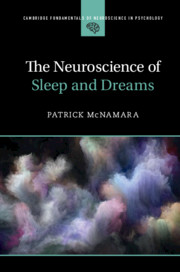Book contents
- Frontmatter
- Dedication
- Contents
- Figures
- Tables
- Preface
- Acknowledgments
- Part I Sleep
- Chapter 1 What Is Sleep?
- Chapter 2 From Biological Rhythms to the Sleep Cycle
- Chapter 3 Expression of Sleep across the Human Lifespan
- Chapter 4 Characteristics of REM and NREM Sleep
- Chapter 5 Sleep Disorders
- Chapter 6 Theories of REM and NREM Sleep
- Part II Dreams
- Appendix: Methods
- References
- Index
Chapter 5 - Sleep Disorders
from Part I - Sleep
Published online by Cambridge University Press: 15 February 2019
- Frontmatter
- Dedication
- Contents
- Figures
- Tables
- Preface
- Acknowledgments
- Part I Sleep
- Chapter 1 What Is Sleep?
- Chapter 2 From Biological Rhythms to the Sleep Cycle
- Chapter 3 Expression of Sleep across the Human Lifespan
- Chapter 4 Characteristics of REM and NREM Sleep
- Chapter 5 Sleep Disorders
- Chapter 6 Theories of REM and NREM Sleep
- Part II Dreams
- Appendix: Methods
- References
- Index
Summary
There are three basic brain states: waking, REM, and NREM sleep. What determines or creates and maintains each of these three states is a differing mixture or profile of brainstem-generated neurotransmitter (aminergic and cholinergic modulation) activity levels as well as differing forebrain activation and deactivation patterns, which were discussed in previous chapters. The three different brain activity profiles that give rise to the three different brain states must be thought of as probabilistic profiles. Each brain state’s profile can be fully engaged or only partially engaged. Most importantly for understanding the experiences associated with parasomnias, the transitions between the brain states can also be complete or only partial. When one state ends another state begins if the transition between states is complete. But because the mechanisms that control brain states are probabilistic, transitions between states are virtually never entirely complete. When transitions between states are partial we get a hybrid brain state, for example, a mixture of REM and waking or a mixture of NREM and waking or REM with NREM. When these hybrid states occur we get the classic parasomnias.
- Type
- Chapter
- Information
- The Neuroscience of Sleep and Dreams , pp. 78 - 98Publisher: Cambridge University PressPrint publication year: 2019



